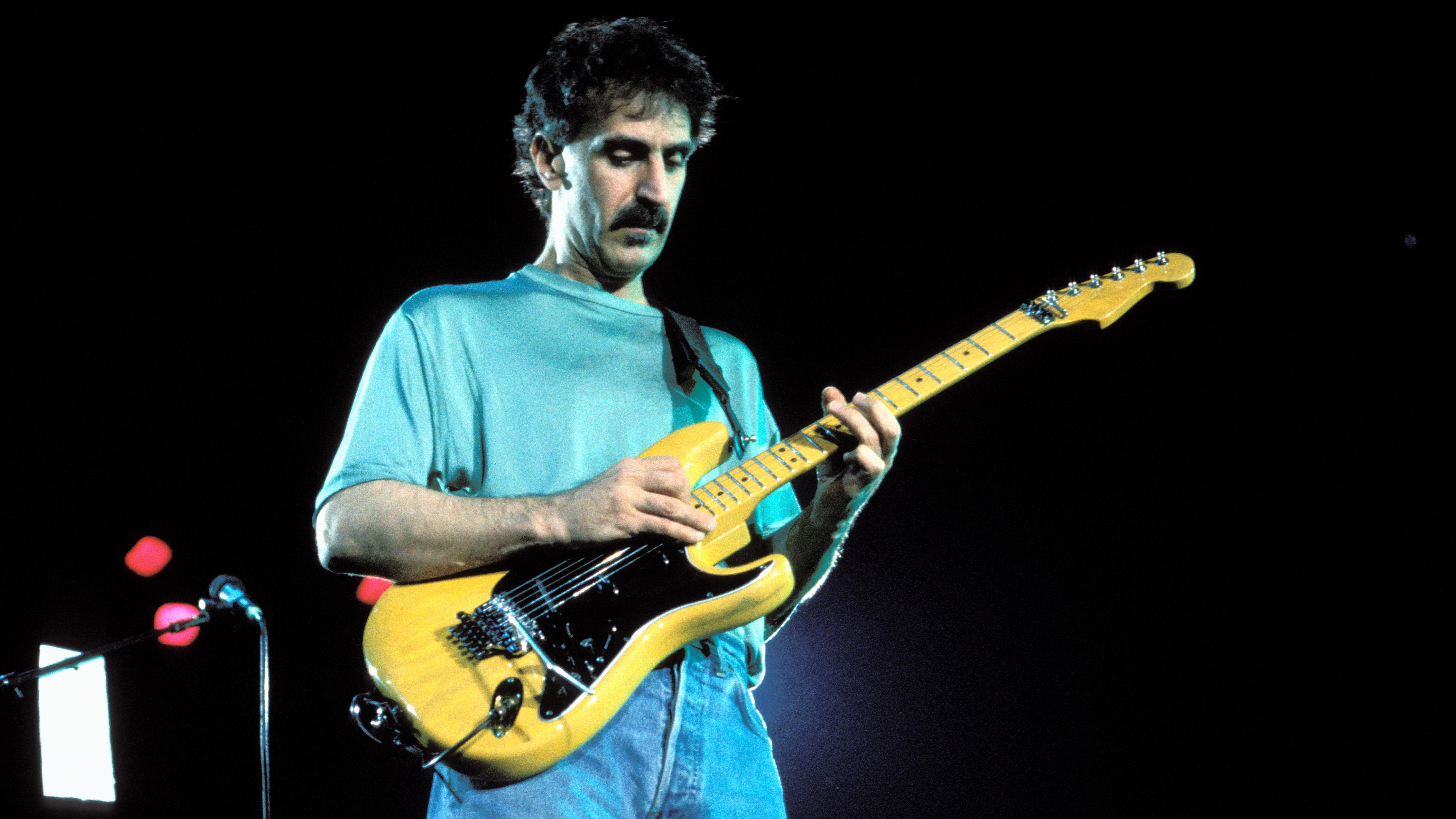Watch Frank Zappa Play One of His Greatest Solos On His Final Tour
Dweezil Zappa deemed this brilliant and emotive solo to be his father’s finest.

Released in 1979, Frank Zappa’s monumental Joe’s Garage is a three-part rock opera which tells the story of a character called Joe who forms a garage band using “a cheesy little amp with a sign on the front that said Fender Champ.” Unfortunately, poor young Joe’s comically tragic life spins out of control across all six sides of the triple album, with Zappa covering a vast amount of musical ground along the way.
Clocking in at ten minutes in length, “Watermelon in Easter Hay” is the first of two tracks on side B of Act III (the other being “A Little Green Rosetta”) and is themed upon Joe’s “last imaginary solo.”

The title refers to Zappa’s difficulty with a band that overplays: “It’s from the statement that playing a solo with this band is like trying to grow a watermelon in Easter hay,” he told one interviewer. “And most of the bands that I’ve had, it was like that. It’s been just recently where I’ve had rhythm sections that don’t get in my way and let me do what I am going to do.”
In this clip filmed in 1988 during his last tour, Zappa plumbs some mysterious depths of his soul to coax out one of the most emotional solos of his long career. He reportedly considered it the album’s best song, and Dweezil Zappa has deemed it the best solo his father ever played.
The electric guitar used by Zappa in this clip is a custom-made S-type sporting concentric knobs and screwdriver-adjustable trimpots to fascilitate the kind of tone tweaking he was so fond of.
“The trimpots are identical parametric filter circuits,” Zappa’s tech, Midget Sloatman, told GP in 1995. “One trimpot is dedicated to bass frequencies from about 50Hz to 2kHz, and the other one affects the top-end frequencies from about 500Hz up to 20kHz.

"The filters also featured a variable resonant frequency [or ‘Q’] knob that allowed Frank to control the feedback characteristics of his rig in any hall. He could basically tune his guitar to the room, determine how the room responded to the amplifier, and then use the Q control to elicit the feedback he wanted.
All the latest guitar news, interviews, lessons, reviews, deals and more, direct to your inbox!
“Frank also used the active filters to emphasize the highs in the 4k-to-8k range in order to bring out the nuances of the strings."

Browse Frank Zappa's music and pick up Joe's Garage here.
Rod Brakes is a music journalist with an expertise in guitars. Having spent many years at the coalface as a guitar dealer and tech, Rod's more recent work as a writer covering artists, industry pros and gear includes contributions for leading publications and websites such as Guitarist, Total Guitar, Guitar World, Guitar Player and MusicRadar in addition to specialist music books, blogs and social media. He is also a lifelong musician.

